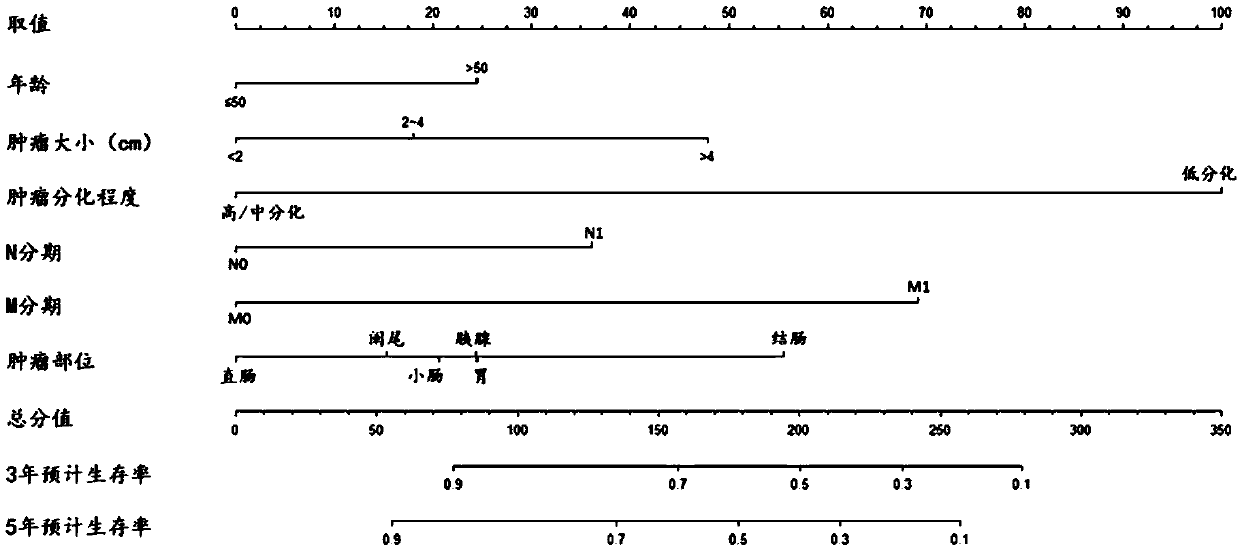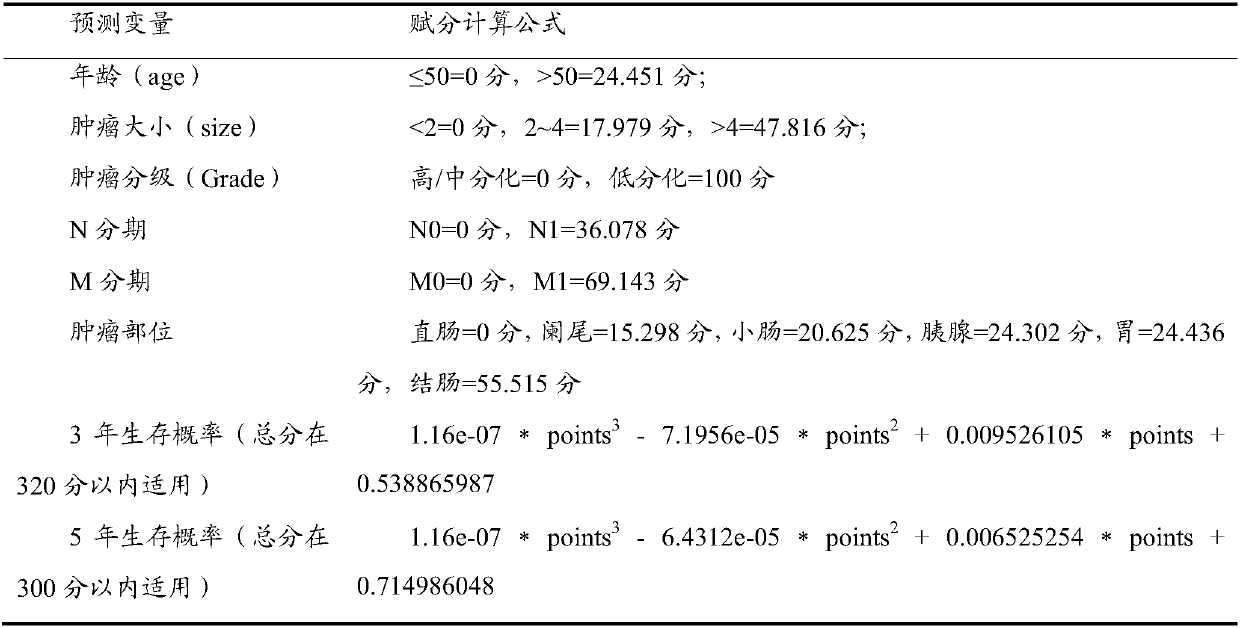System for precisely predicting prognoses of patients with gastro-entero-pancreatic neuroendocrine tumors
A technology for patients with neuroendocrine and tumors, applied in health index calculation, medical informatics, informatics, etc., can solve problems such as lack of data support, achieve the effects of improving accuracy, avoiding insufficient treatment, and preventing waste of medical resources
- Summary
- Abstract
- Description
- Claims
- Application Information
AI Technical Summary
Problems solved by technology
Method used
Image
Examples
Embodiment 1
[0032] The present invention first establishes a domestic multi-center, large sample, complete clinicopathological data and follow-up data of gastroenteropancreatic neuroendocrine tumors (GEP-NENs) clinical database, by selecting from the basic data of 1468 cases of Chinese GEP-NENs patients 1,183 patients met the requirements; at the same time, 10,236 GEP-NENs patients who met the requirements were searched and screened using the world's largest cancer database - the National Cancer Institute SEER database. Secondly, use these two databases as the basis for constructing the prediction model, use a model training set and an external verification set to make predictions and calculate their prediction accuracy, and finally compare the predicted survival of patients with the actual survival of patients Yes, to evaluate predictive performance. The detailed results are as follows:
[0033] 1. Through conditional screening of 1468 patients with gastroenteropancreatic neuroendocrine...
PUM
 Login to View More
Login to View More Abstract
Description
Claims
Application Information
 Login to View More
Login to View More - R&D
- Intellectual Property
- Life Sciences
- Materials
- Tech Scout
- Unparalleled Data Quality
- Higher Quality Content
- 60% Fewer Hallucinations
Browse by: Latest US Patents, China's latest patents, Technical Efficacy Thesaurus, Application Domain, Technology Topic, Popular Technical Reports.
© 2025 PatSnap. All rights reserved.Legal|Privacy policy|Modern Slavery Act Transparency Statement|Sitemap|About US| Contact US: help@patsnap.com


